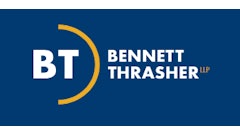
The Department of Government Efficiency (DOGE) has launched sweeping reforms aimed at eliminating waste, streamlining procurement and reallocating federal funds away from underperforming or redundant programs. While DOGE’s mission focuses on government operations, government contractors - including in the construction industry - are feeling the ripple effects of the department’s actions. One of the most significant impacts: a major surge in construction contract terminations for convenience.
For government construction contractors, DOGE’s influence presents a stark reality. Projects are being paused, modified, or outright canceled — not for cause but due to budget priorities and agency restructuring. As the government looks to tighten fiscal policies, contractors are increasingly finding themselves faced with termination notices. The question is: What happens next?
Budget Cuts and Canceled Contracts
Federal construction contractors are being encouraged to trim project lists, consolidate scopes of work and reassess long-term contracts. As a result, construction contractors are encountering abrupt notices of partial or total termination, sometimes on the eve of mobilization or midperformance.
Beyond the operational shock, the financial consequences are significant. Contractors invest heavily in mobilization, staffing, equipment and supply chain commitments. When a contract is terminated for convenience, those sunk costs cannot always be recovered dollar for dollar. Moreover, contractors may face cascading effects — subcontractor obligations, demobilization fees and loss of anticipated profit. Careful planning is required to avoid a potential company catastrophe.
Understanding Termination for Convenience Under the FAR
The federal government has broad discretion to terminate contracts for convenience. This authority is contained in FAR Part 49, which permits agencies to cancel contracts when it is in the government’s interest.
Termination for convenience is distinct from termination for default. Although it is not supposed to be punitive, it often leaves the contractor without complete relief.
FAR 52.249-2 (for fixed-price contracts) and FAR 52.249-6 (for cost-reimbursement contracts) outline the rights and responsibilities of both parties following a termination for convenience. These clauses entitle the contractor to certain types of compensation in the event of termination, provided the contractor submits a timely settlement proposal in accordance with the FAR.
The Settlement Process: What You Can (and Cannot) Recover
After receiving a termination for convenience notice, a contractor must begin preparing a termination settlement proposal. Under FAR 49.206-1, this proposal must typically be submitted within one year, although extensions can be negotiated.
Recoverable costs generally include:
- Incurred costs: direct costs up to the date of termination, including labor, materials, rental costs, idle facility/capacity costs, and subcontractor payments.
- Settlement expenses: reasonable costs associated with preparing the proposal and negotiating the settlement.
- Delay costs: delays incurred in the lead-up to termination.
- Demobilization costs: including site shutdown, equipment removal, and related expenses.
- Restocking fees: for canceled material orders.
- Subcontractor settlement costs: fair and reasonable costs incurred in settling claims with subcontractors.
- Profit on work performed: to recover reasonable profit on completed work.
- Equitable adjustments: in certain cases, for out-of-scope work or changes prior to termination.
However, the FAR specifically excludes recovery of:
- Anticipated profit on unperformed work.
- Costs incurred after the effective date of termination (unless necessary for settlement).
Losses on other contracts.
To substantiate a settlement proposal, contractors must provide detailed documentation, including:
- Accounting records and invoices.
- Subcontractor termination settlements.
- Equipment leases or purchase orders.
- Payroll and labor hour records.
- Inventory and material receipts.
The contracting officer will review the proposal and may request audits. In many cases, the final settlement will be the result of a negotiation with the government. Note that that the FAR permits partial payment of a settlement proposal if there are areas of agreement but final settlement has not been reached—these partial payments can ease cash flow issues for contractors. If the negotiations fail, a claim can be filed under the Contract Disputes Act, which involves the submission of a formal claim to the contracting officer.
Tips for Contractors Facing Termination for Convenience
If your construction contract is terminated as a result of DOGE-related restructuring, here’s what you should do:
- Review the Termination Clause — Immediately analyze your contract’s termination for convenience provision. Identify applicable FAR clauses and deadlines.
- Document Everything — Begin collecting cost records, invoices, timesheets, purchase orders and subcontractor agreements. Good records are critical to maximizing recovery.
- Secure the Site — If on site, demobilize carefully and document the condition of the work performed. Take photographs, log inventory, and coordinate with the contracting officer.
- Notify Subcontractors Promptly — Issue flow-down termination notices and begin negotiating settlements with your subs. Their claims must be rolled into your settlement proposal.
- Submit a Timely Settlement Proposal — Don’t wait; early submission can expedite payment and demonstrate professionalism. Include all allowable costs and clear justification.
Creative Strategies to Maximize Recovery
Contractors are not limited to standard cost recovery. There are several ways to creatively increase the value of a termination settlement:
- Request a Partial Termination — If only part of the scope is affected, propose a partial termination. This allows you to continue work — and preserve profit — on unaffected portions.
- Negotiate for Equitable Adjustments — If DOGE-related programmatic changes caused delays or changes before the termination, request an equitable adjustment.
- Use Convenience Termination to Renegotiate Scope — Use terminations as leverage to propose more efficient, streamlined scopes of work that align with DOGE priorities.
- Claim Constructive Changes — If the government’s actions effectively changed your performance prior to termination, assert a constructive change claim under the changes clause.
- Leverage Audit Results — Prepare for audits by preemptively organizing your cost structure. Strong internal controls can reduce scrutiny and support higher recovery.
While DOGE’s impact is undeniable, the FAR provides a structured path forward for government construction contractors facing unexpected termination. By understanding your rights, preparing your claim diligently, and negotiating effectively, you can mitigate losses and position your construction business to weather the next wave of government reforms.
If your contract is terminated — or if you suspect it may be — consult legal counsel and begin preparing immediately. Termination for convenience is never convenient for the contractor, but with the right strategy, it may not have to be devastating.


















